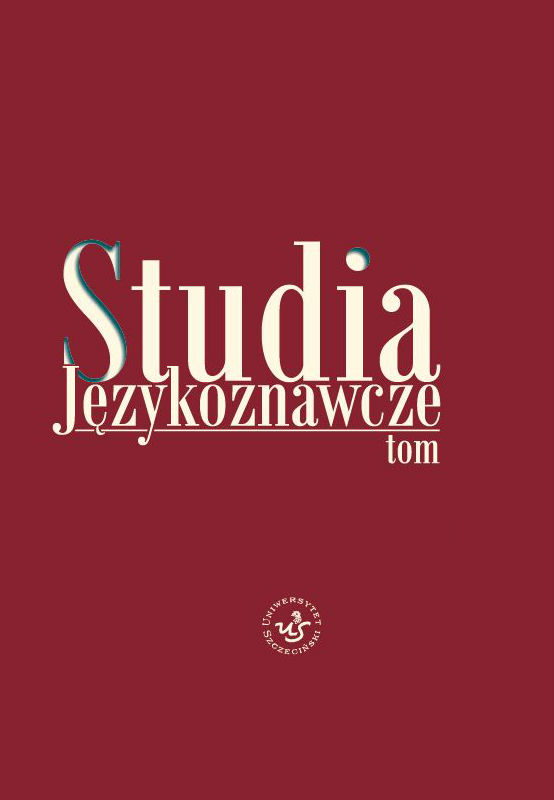Językowe wykładniki barw w międzywojennych wierszach Jana Lechonia
The language exponents of colors in the interwar (1918-1939) poems by Jan Lechoń
Author(s): Andrzej S. DyszakSubject(s): Language and Literature Studies
Published by: Wydawnictwo Naukowe Uniwersytetu Szczecińskiego
Keywords: Lechoń’s poetry; colors vocabulary; grammar and semantics
Summary/Abstract: This article presents linguistic exponents of colors that Jan Lechoń used in poems of poetry volumes: „Karmazynowy poemat” („The Crimson Poem”) and „Srebrne i czarne” („The Silver and The Black”). The poet has used two types of colors exponents: lexical (adjectives, such as „czarny” = „black”, nouns, such as „fiolet” = „violet”, verbs, such as „pobieleć” = „to whiten”, adverb „srebrzyście” – „silvery”) and non-lexical (comparative expression „jak mlekiem oblany” = „as bathed in milk” and syntactic structure „ogień żarzy” = „fire glows”). The lexical exponents of colors co-creation of various syntactic relationships in which their meaning is revealed. Most linguistic exponents of colors serve as descriptive in the analyzed poems, for example: „białe chmurki” = „white clouds”, „żółty blask” = „yellow glow”. Sometimes the exponents describe imaginary phenomenons, see „mgła wspomnień błękitna” = „the blue haze of memories”. Some exponents of colors are symbolic, cf. „śpiewają bielą, amarantem” = „(they) sing white, amaranth” (white and amaranth is the Polish national symbols). The metonymic meanings are also interesting, as in the phrase „upił się miodnym złotem” = „(he) got drunk honey gold”
Journal: Studia Językoznawcze. Synchroniczne i diachroniczne aspekty badań polszczyzny.
- Issue Year: 2014
- Issue No: 13
- Page Range: 67-90
- Page Count: 24

